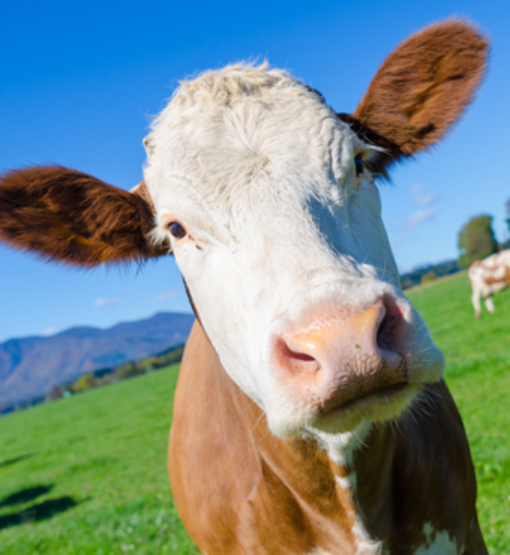Grass-Fed Beef vs. Grain-Fed Beef: What's the Difference?

Grass-fed vs. grain-fed: what’s the difference?
Most cows’ lives begin the same way. They are born and raised in pastures, and after moving off their mothers’ milk, eat grass until they’re seven to nine months old. Traditionally, cows remained in pastures until they went to market. More recently, however, many cows have been moved to feeding lots for the remainder of their lives [1, 2].
The feeding process varies between farms, but in general, cows are fed grain-based feeds in feeding lots, rather than grass. These feeds are often made of soy or corn, which fatten cows more quickly than grass does [1].
But this isn’t to say that a particular diet reflects a different quality of life. While many grass-fed cows roam free in pastures, some are fed grass in feeding lots. A third distinction of cows—grass-finished cows—are fed grain-based feeds for much of their lives, before being switched back to a grass-based diet in their final months [1, 2]. Clearly, the line between feeding processes is blurry, but how do these processes affect the nutrients of the food we eat?
Fat, Fat, and More Fat
Both grass-fed and grain-fed beef contain key nutrients for a healthy diet. They both contain alpha-linolenic acid (ALA), an omega-3 fatty acid, and conjugated linoleic acid (CLA), a natural trans-fat [2].
But while both types of beef contain these fats, the quantities in each are quite different. Grass-fed beef contains up to five times as much omega-3 fatty acids (including ALA), and about twice as much CLA as grain-fed beef [1]. Grass-fed beef also contains less monounsaturated fat than grain-fed beef does [1].
Vitamins
Both grass-fed and grain-fed beef contain high amounts of vitamin B12, B3, and B6, as well as iron, selenium, and zinc. However, grass-fed beef contains more carotenoids, such as beta-carotene, which our bodies process into vitamin A. Grass-fed beef also contains higher amounts of vitamin E than grain-fed beef does. However, while grass-fed beef is higher in these vitamins than grain-fed beef, the overall level of these vitamins per serving is quite low (about 2% of the daily value per 100g) [3].
Which one should you eat?
Grass-fed beef is leaner than grain-fed beef, with less fat per serving. Because of this, grass-fed beef is lower in calories per serving than grain-fed beef is [1]. However, it’s often not as juicy and tender as the fattier grain-fed beef, particularly in prime cuts of beef [2]. If you’re particular to certain cuts of beef, you may want to stick with grain-fed beef. But if you’re not, or if you’re eating ground beef (where tenderness isn’t an issue), we’d recommend grass-fed beef. You’ll eat fewer calories and get a few more key nutrients into your diet. Plus, the cows are probably happier.
***
Try grass-fed ground beef in our Salisbury Steak recipe.
Looking for other keto-friendly foods? Check out our Keto Essentials Shopping List.
Have more questions about keto-friendly foods? Check out our article Debunking the Top 4 Myths to Set You Up for Success.
Want to kickstart your keto journey? Take the KETO 30 Challenge.
REFERENCES
[1] https://www.healthline.com/nutrition/grass-fed-vs-grain-fed-beef
[2] https://www.tenderfilet.com/articles/Grass-fed-vs-Corn-fed-Beef-Whats-the-Difference
[3] http://nutritiondata.self.com/facts/beef-products/10526/2
-
Posted in
Authority Article, Nutrition, Nutrition Article




